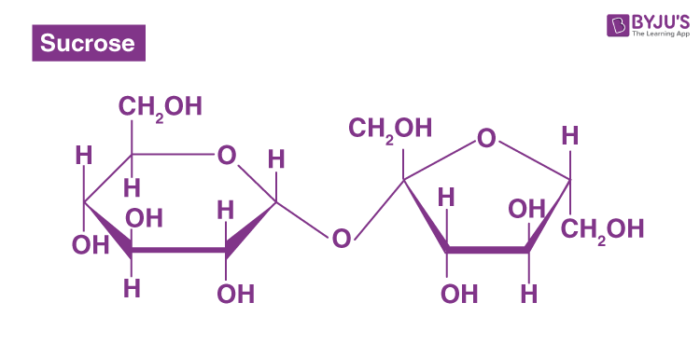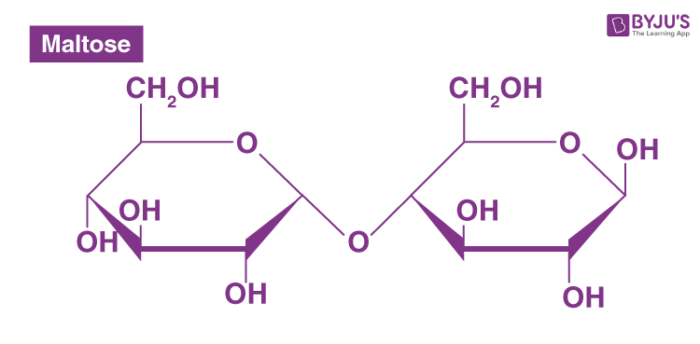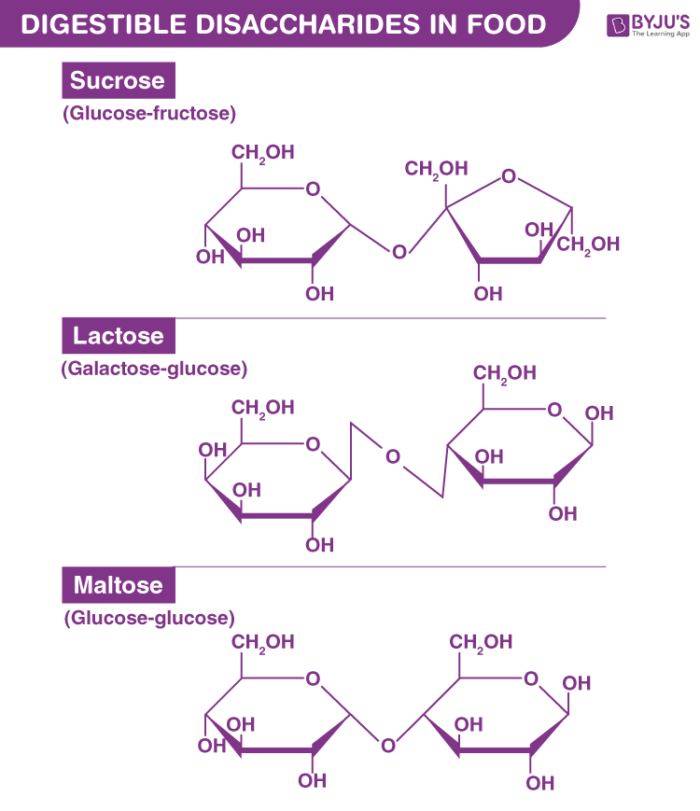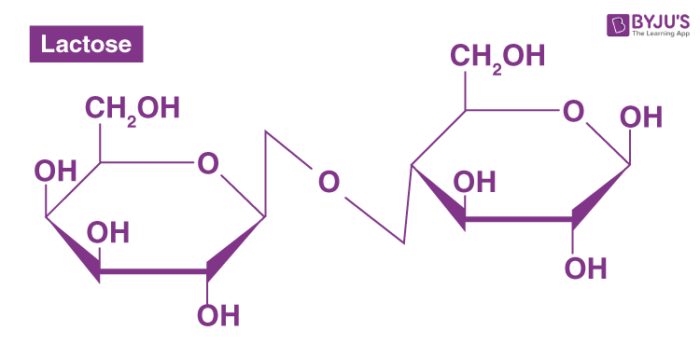A disaccharide (also called a double sugar ) is the sugar formed when two monosaccharides (simple sugars) are joined by glycosidic linkage. Like monosaccharides, disaccharides are soluble in water. Three common examples are sucrose, lactose, and maltose.
Table of Content
- What are Disaccharides?
- Structure of Disaccharides
- Examples of Disaccharides
- Some More Types of Disaccharides
- Frequently Asked Questions – FAQs
What are Disaccharides?
Disaccharides are those carbohydrates that on hydrolysis with acids or enzymes give two molecules of monosaccharides which can either be the same or different.
The oxide linkage is formed after the loss of the water molecule and then the two monosaccharides are formed by that linkage. When two monosaccharide units are joined via the oxygen atom then that linkage is called a glycosidic linkage.
Structure of Disaccharides (Sucrose)
The most common disaccharide is sucrose which gives D -(+)- glucose and D-(-)- fructose on hydrolysis.
Both the monosaccharides i.e. glucose and fructose are connected through the glycosidic linkage between alpha glucose and second carbon beta fructose. Sucrose is a non-reducing sugar as both the reducing groups of glucose and fructose are involved in the glycosidic bond formation.
Examples of Disaccharides
1. Sucrose
Sucrose being dextrorotatory in nature gives dextrorotatory glucose as well as laevorotatory fructose on hydrolysis. The overall mixture is laevorotatory and this is because the laevorotation of fructose (-92.4) is more than the dextrorotation of glucose (+52.5).

2. Maltose
Maltose is also one of the disaccharides which have two α -D-glucose units which are connected by the first carbon of the glucose and also linked to the fourth carbon of another glucose unit. In the solution, a free aldehyde can be produced at the first carbon of the second glucose of the solution and it is a reducing sugar as it shows reducing properties.

3. Lactose
Commonly it is called milk sugar as this disaccharide is found in milk. It is made up of Beta-D-galactose and β-D-glucose. The bond is between the first carbon of galactose and the fourth carbon of glucose. This is also a reducing sugar.
Some More Types of Disaccharides
There few more types which are not that popular, such as:
- Trehalose
It is made up of 2 molecules of glucose which are linked differently. This can be found in fungi, plants, and insects.
- Lactulose
It is formed from galactose and fructose. It is helpful for the treatment of constipation and liver diseases.
- Cellobiose
It is also made up of two glucose molecules which are also arranged differently. These can be seen bacteriology which is a form of chemical analysis.
- Chitobiose
It comprises two glucosamine molecules which are linked. It is seen in some bacteria, exoskeletons of insects and is also found in fish, octopus, and squid.
Recommended Videos

Frequently Asked Questions – FAQs
What is the General Formula of Carbohydrates?
The general formula for carbohydrates is Cx(H2O)y.
Carbohydrates (or sugars) were originally believed to be “hydrates of carbon,” because they have the general formula Cx(H2O)y.
What is the molecular formula of the most common disaccharide?
Disaccharides are the carbohydrates that on hydrolysis gives two same or different carbohydrates. Their general formula is C12H22O11.
What Is Maltose?
Maltose which is also known as a disaccharide made up of two alpha D glucose unit. The two-unit of glucose are linked with an alpha 1,4 glycosidic bond.
Is maltose a monosaccharide or disaccharide?
Maltose is a disaccharide.
Does maltose give Fehling’s test?
Yes, maltose gives a positive Fehling’s test.
For more information on topics like glucose and more, register with BYJU’S and download our app.



It’s so helpful to a student